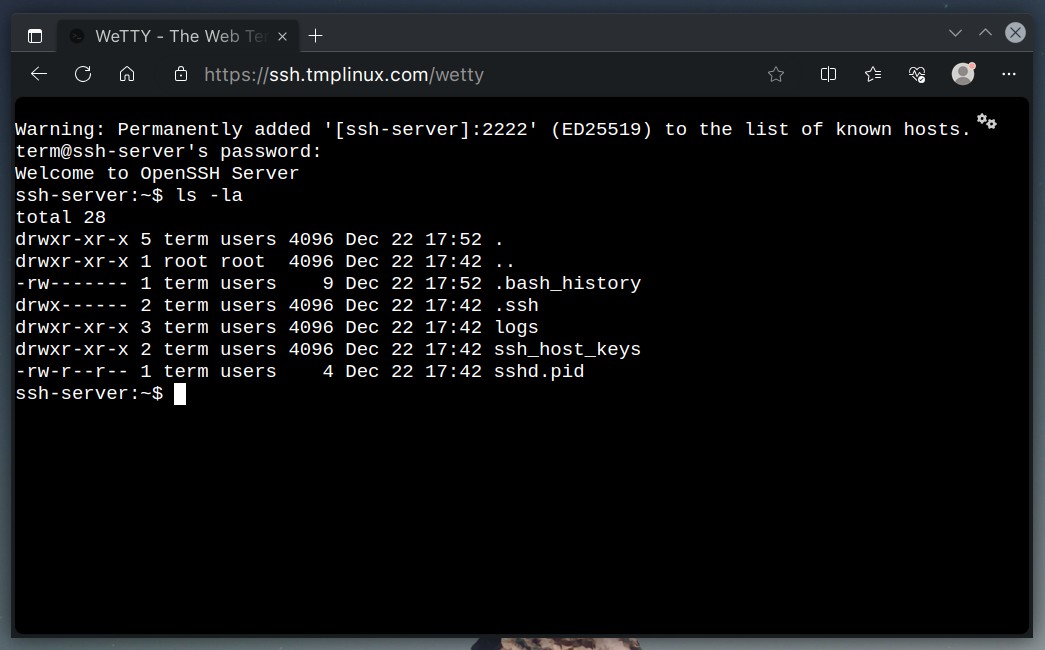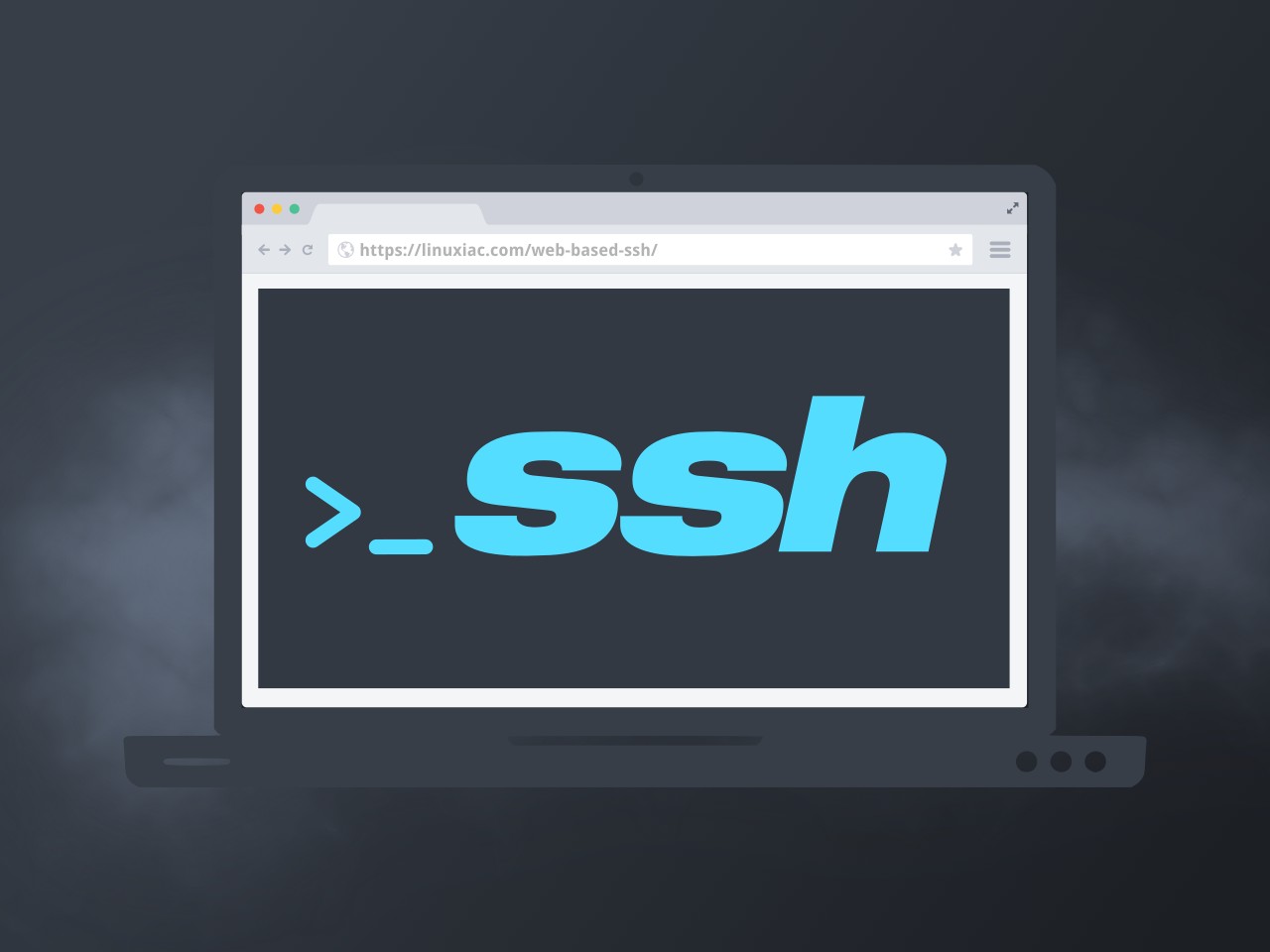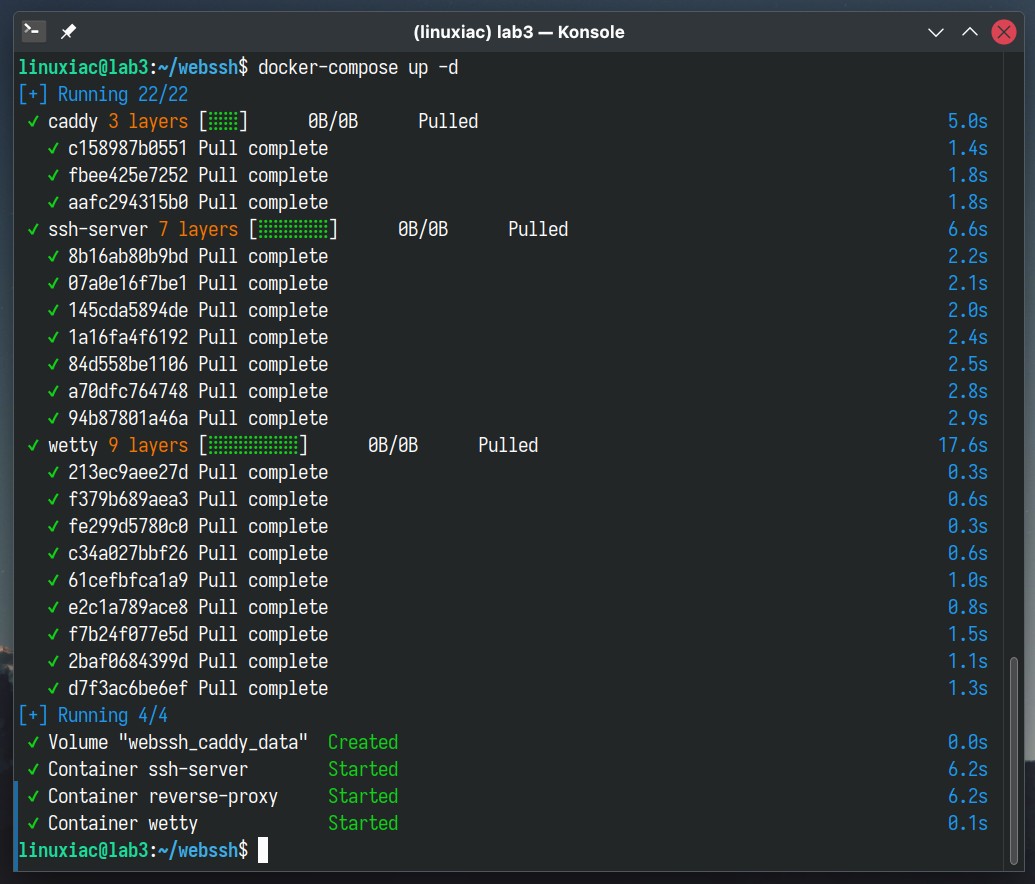Web SSH Clients: Access Servers Securely [Browser-Based]
Ever felt chained to your desk just to access a crucial SSH server? Imagine the freedom of managing your servers from any device, anywhere in the world, all through a simple web browser. This isn't some futuristic fantasy; it's the reality that web-based SSH clients are bringing to system administrators and developers alike.
The traditional method of connecting to an SSH server involves using a command-line application within a terminal or a dedicated terminal emulator software. While these tools are powerful and reliable, they often lack the flexibility and accessibility that modern web applications provide. This is where the new generation of web-based SSH clients steps in, offering a seamless and platform-agnostic solution for remote server management.
| Category | Information |
|---|---|
| Name | Web-Based SSH Clients |
| Description | Software applications that allow users to access SSH servers through a web browser. |
| Benefits | Accessibility from any device with a web browser, no need for dedicated SSH client software, simplified management, enhanced security features (in some implementations). |
| Examples | Consolefish, Webterminal, Sshwifty |
| Protocols Supported | SSH, Telnet, VNC, RDP, SFTP (depending on the specific client) |
| Programming Languages | Python, JavaScript (typically) |
| Key Technologies | Tornado, Paramiko, xterm.js, Django (depending on the specific client) |
| Authentication Methods | Password authentication (including empty passwords), Key-based authentication (depending on the specific client) |
| Use Cases | Remote server management, DevOps, Continuous Delivery, accessing servers from restricted networks. |
| Reference Website | SSH Communications Security |
One particularly intriguing implementation, "consolefish," introduces a fascinating aspect of anonymity. It purportedly allows users to open SSH connections without revealing their IP address to the remote system. This is achieved by preventing the connecting web client's IP address from being transmitted to the target server, adding an extra layer of privacy for users concerned about exposing their location.
Several projects are contributing to this growing trend. Consider the "Webterminal," a project implemented using the Django framework. It is specifically designed to streamline DevOps and continuous delivery workflows. Its core functionality centers around providing a web-based terminal interface for managing and interacting with remote servers.
Then there’s the versatility champion. Certain web-based clients boast support for a broad spectrum of remote management protocols, often encompassing not only SSH but also VNC, RDP, Telnet, and SFTP. This comprehensive approach transforms these clients into veritable Swiss Army knives for system administrators, capable of handling diverse remote access scenarios within a unified platform.
Deployment of these solutions often involves a relatively straightforward process. Typically, you would copy or clone the project repository into a directory that's being served by a web server. After that, simply navigating to the "index.html" file in your web browser will launch the web-based SSH client, allowing you to start configuring your connections.
It is important to acknowledge that web-based SSH clients come in varied flavors. You might encounter different versions of the same project, each potentially offering distinct features or optimizations. Always ensure you're selecting the version that best aligns with your specific needs and technical environment. For example, one version might prioritize simplicity and ease of use, while another might focus on advanced features and customization options.
Another compelling example is "Sshwifty," explicitly designed as a web-based SSH and Telnet client. Sshwifty enables users to access SSH and Telnet services directly from their web browsers, eliminating the need for separate terminal applications. This streamlined approach simplifies the process of connecting to remote servers and makes it accessible from a wider range of devices and platforms.
The underlying technologies powering these web-based SSH clients are also noteworthy. Many of them are built using Python, leveraging frameworks like Tornado and libraries like Paramiko. Tornado provides the asynchronous networking capabilities necessary for handling multiple concurrent SSH connections, while Paramiko offers a secure and robust SSHv2 protocol implementation. Furthermore, the use of xterm.js provides the front-end terminal emulation, ensuring a familiar and responsive user experience within the web browser.
Security is paramount when dealing with remote server access, and web-based SSH clients are no exception. While password authentication is often supported, including the option of using an empty password (which is strongly discouraged for security reasons), more secure authentication methods, such as key-based authentication, are also frequently available. Key-based authentication eliminates the need to transmit passwords over the network, significantly reducing the risk of password interception or brute-force attacks.
However, it's crucial to address the security implications of using web-based SSH clients. Because these clients are accessible through a web browser, they are potentially vulnerable to web-based attacks, such as cross-site scripting (XSS) and cross-site request forgery (CSRF). Therefore, it's essential to ensure that the web-based SSH client you're using is properly secured, with measures in place to prevent these types of attacks. This may involve implementing robust input validation, output encoding, and CSRF protection mechanisms.
Another important consideration is the security of the underlying web server and the network infrastructure on which the web-based SSH client is deployed. The web server should be configured with appropriate security measures, such as firewalls, intrusion detection systems, and regular security updates, to protect against unauthorized access and malicious attacks. Additionally, the network infrastructure should be properly segmented and secured to prevent attackers from gaining access to the web server or the SSH servers that it connects to.
Beyond security, performance and scalability are also important factors to consider, especially in environments with a large number of concurrent users or SSH connections. The web-based SSH client should be designed to handle a high volume of traffic without experiencing performance degradation or instability. This may involve optimizing the code for efficiency, using caching mechanisms to reduce server load, and employing load balancing techniques to distribute traffic across multiple servers.
Furthermore, the user experience should be carefully considered when selecting or developing a web-based SSH client. The interface should be intuitive and easy to use, with clear and concise instructions. The client should also provide a responsive and reliable terminal emulation, ensuring that users can interact with remote servers without experiencing lag or other performance issues. Features such as tab completion, command history, and syntax highlighting can also enhance the user experience and improve productivity.
The ability to customize the web-based SSH client is also a valuable feature. This allows users to tailor the client to their specific needs and preferences, such as changing the font size, color scheme, and terminal settings. Customization can also extend to adding new features or integrations, such as support for different authentication methods or the ability to integrate with other tools and services.
Another area of ongoing development in the realm of web-based SSH clients is the integration with cloud-based platforms and services. As more and more organizations migrate their infrastructure to the cloud, the need for seamless and secure access to cloud-based resources is becoming increasingly important. Web-based SSH clients can play a key role in this regard, providing a convenient and secure way to manage cloud-based servers and services from any device with a web browser.
Moreover, the increasing popularity of containerization technologies like Docker and Kubernetes is driving the demand for web-based SSH clients that can seamlessly integrate with these platforms. These clients can be used to access and manage containers running in a Docker or Kubernetes environment, providing a convenient way to troubleshoot issues, deploy applications, and perform other administrative tasks.
Looking ahead, the future of web-based SSH clients appears bright. As web technologies continue to evolve and become more powerful, we can expect to see even more sophisticated and feature-rich web-based SSH clients emerge. These clients will likely offer enhanced security features, improved performance, and tighter integration with cloud-based platforms and containerization technologies.
The development of web-based SSH clients is also being driven by the growing demand for remote work and distributed teams. As more and more organizations embrace remote work policies, the need for secure and accessible tools for managing remote servers and infrastructure is becoming increasingly critical. Web-based SSH clients provide a valuable solution in this regard, allowing remote workers to access and manage servers from anywhere in the world, without the need for dedicated VPN connections or complex security configurations.
In conclusion, the evolution of web-based SSH clients represents a significant advancement in remote server management. By providing a platform-agnostic, accessible, and often more secure alternative to traditional SSH clients, these tools are empowering system administrators and developers to manage their infrastructure more efficiently and effectively. As web technologies continue to advance, we can expect to see even more innovative and powerful web-based SSH clients emerge, further transforming the way we interact with remote servers and infrastructure.
Furthermore, the rise of the Internet of Things (IoT) is also contributing to the demand for web-based SSH clients. As more and more devices become connected to the internet, the need for secure and remote access to these devices is becoming increasingly important. Web-based SSH clients can provide a convenient and secure way to manage IoT devices from anywhere in the world, allowing users to monitor device status, configure device settings, and perform remote troubleshooting.
The security of these web-based SSH clients remains a crucial aspect. Regular security audits, penetration testing, and adherence to secure coding practices are essential to identify and address potential vulnerabilities. Furthermore, educating users about best practices for using these clients securely, such as choosing strong passwords and enabling two-factor authentication, is also vital.
The user interface (UI) and user experience (UX) design of web-based SSH clients are also becoming increasingly important. As these clients become more sophisticated, the UI and UX must keep pace, providing users with an intuitive and efficient way to manage their servers and devices. This may involve incorporating features such as drag-and-drop functionality, visual representations of server status, and customizable dashboards.
The open-source community is also playing a significant role in the development of web-based SSH clients. Many of these clients are open-source projects, allowing developers from around the world to contribute to their development and improvement. This collaborative approach fosters innovation and ensures that these clients remain up-to-date with the latest security and technology trends.
The integration of web-based SSH clients with other tools and services is also becoming increasingly important. For example, integrating these clients with monitoring tools can provide users with real-time insights into server performance, allowing them to quickly identify and address potential issues. Similarly, integrating these clients with automation tools can enable users to automate repetitive tasks, freeing up their time to focus on more strategic initiatives.
Moreover, the ability to record and audit SSH sessions is also a valuable feature. This allows administrators to track user activity, identify potential security breaches, and comply with regulatory requirements. Session recording can also be used for training purposes, allowing new users to learn how to use the client effectively.
The localization and internationalization of web-based SSH clients are also becoming increasingly important. As these clients are used by users from around the world, it is essential to provide support for multiple languages and cultural conventions. This may involve translating the UI into different languages, adapting the date and time formats to different locales, and ensuring that the client can handle different character encodings.
The use of web-based SSH clients can also contribute to a more sustainable IT environment. By enabling remote access to servers and devices, these clients can reduce the need for travel, which can significantly reduce carbon emissions. Furthermore, by enabling more efficient management of servers and devices, these clients can help to reduce energy consumption and extend the lifespan of hardware.
In conclusion, web-based SSH clients are transforming the way we manage remote servers and infrastructure. By providing a secure, accessible, and efficient way to access and control remote resources, these clients are empowering system administrators, developers, and IT professionals to work more effectively and productively. As web technologies continue to evolve, we can expect to see even more innovative and powerful web-based SSH clients emerge, further revolutionizing the way we interact with the digital world.

How to Set Up a Web Based SSH A Step By Step Guide

How to Set Up a Web Based SSH A Step By Step Guide

How to Set Up a Web Based SSH A Step By Step Guide